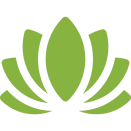The word Panchakarma in Sanskrit means “five procedures” in common man’s terms Panchakarma is a detoxification treatment. Ayurveda explains five detoxification procedures namely –
- Vamana – emesis treatment
- Virechana – purgation treatment
- Basti – enema therapy
- Nasya – nasal installation of oil
- Raktamokshana – bloodletting
Other treatments such as Abhyanga (body massage), Sweda (steam), Shirodhara, etc are Upakarma
What is Virechana: It is one of the Panchakarma procedure wherein body toxins are flushed through controlled purgation. The naval region is the seat of Pitta and Virechana is the best treatment to overcome the accumulation of excessive pitta otherwise it leads to diseases such as abscess, liver disorder, diabetes, gastritis, skin disorders, etc. Palliative drugs or Shamana medicines are given orally if the aggravation of Dosha are minimal and if Doshas are highly aggravated, then shodhana (Detoxification) is required.
What are the benefits: By clearing toxins from the body, it purifies blood, promotes deep purification within the tissues, eliminates toxins that are accumulated in the liver, gall bladder, spleen, blood, reproductive organs and skin. The entire gastro-intestinal tract is flushed out by this safe and gentle method of treatment.
Who can go for the treatment: If one suffers from skin disease, non-healing wounds, ulcers, abscess, liver disease, jaundice, ascites, spleenomegaly, anemia, disorders related to urogenital system, gout, hemorrhoids and even a few of bleeding disorders (in the upper part of the body),
diabetes and
obesity then Virechena is the right form of treatment.
Who cannot go for the treatment: Does Virechana have a few contraindications? If one suffers from fever of recent origin, diarrhea, dysentery, bleeding in the lower parts of the body such as bleeding per rectum, at the menstruation, person suffering from poor digestive issues, emaciated and people who are undergoing kashaya basti, pregnant, person above 70 years and below 15 years are not eligible for the treatment.
Procedure & Medicine: Virechana begins with an initial consultation by the Ayurveda doctor, who can determine an individual’s
prakruti (body constitution), the nature of the health problem, level of metabolism and the toxin accumulation. Medicines used in Virechana are based upon individual body constitution, doshic imbalances, age, digestive strength, immune status, season, and a lot of other factors. Duration of the treatment varies from 10 to 15 days. Diet restrictions are to be strictly followed to attain a maximum level of detoxification. Medication is prescribed upon analysis of the digestive capacity with an aim to improve and correct the digestive fire for the first 3 to 5 days. Light vegetarian food is ideal during these days.
A medicated ghee is prescribed on 4
th to 6
th day in an increasing dosage which is easily absorbed in the body. The dosage and days are fixed again depending on the toxin level and digestive fire (though number of days may vary). Diet is catered according to individual body constitution but foods such as thinner version of porridge cooked from green gram/ red rice is ideal. This helps in diluting the toxins from all the organs.
What are the indications that treatment is working? Are toxins being diluted? Symptoms such as headache, not being hungry, sweating or when skin looks bit too oily (Sneha Snigdha Lakshana) and ghee passes through the motions indicates that body is working towards diluting toxins. Though symptoms may vary from one person to the other these are only positive indicators and nothing to worry about.
How do toxins come out? Going forward from the 7
th or 10
th day Abhyanga is performed along with steam until next three days. This medicated oil, Abhyanga treatment along with a prescribed diet (well cooked rice with certain vegetables or porridge) will help the toxins come to the intestines and to the nearest exit point.
How are toxins removed? 10
th or the 15
th day onwards (3rd day of Abhyanga) an overall routine pulse check will be conducted followed by final detoxifying medicine (to be taken in an empty stomach between 8am-9.30am) while having hot water every15mins throughout the day. Please be aware, Purgation may start 30 minutes of taking the medicine and stools would mostly be green or black in colour. Always remember to keep a count which will be an important factor to decide further diet. The positive attribute about this treatment is one does not feel any kind of discomfort or tiredness on this day. Best to avoid mobiles and laptops on your last day of treatment.



 Please expect a free call back
Please expect a free call back






Leave a comment